Western Branch Library & African American Archives
Introduction
Text-to-speech Audio
Images
Western Branch Library, formerly the Western Colored Branch Library, home of the African American Archives (image from African American Postcards)
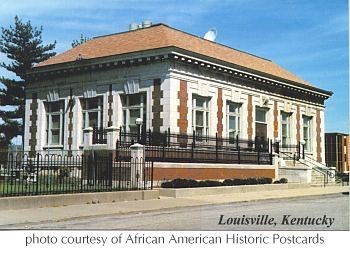
The Western Branch in 1927 (image from the University of Louisville archives)
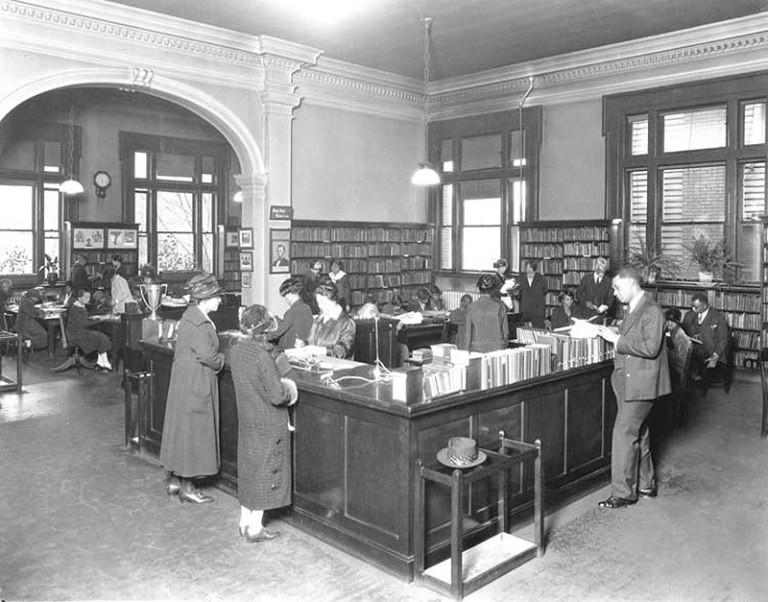
Story Hour at the Western Branch (image from Pinterest)
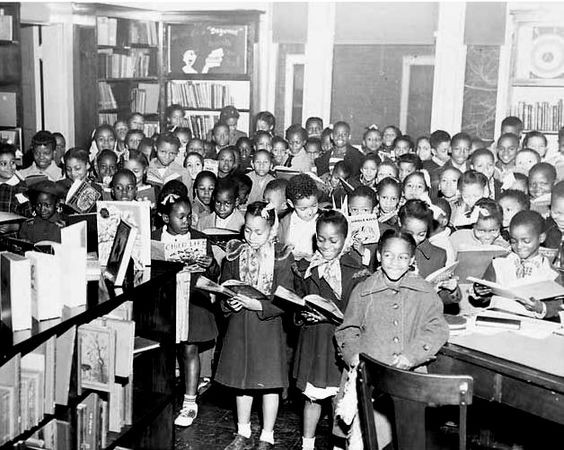
Professor Meyzeek (image from Russell Neighborhood Blog)
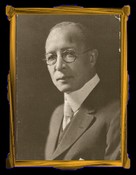
Thomas Fountain Blue, center (image from Russell Neighborhood Blog)
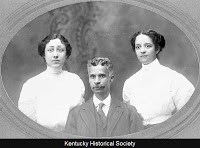
Backstory and Context
Text-to-speech Audio
History of the Western Branch
Albert Ernest Meyzeek, a forthright activist and educator, grew to become one of the most outspoken Black leaders in Kentucky, at the turn of the twentieth century, for equal rights. Professor Meyzeek was the third generation in a long line of freedom fighters in his family, devoted to self-improvement and self-culture. So when the ordinance creating the free public library in Louisville was passed in 1902, Meyzeek, joined by other motivated citizens, pushed to ensure African Americans would have access to these library facilities. One of the first steps in the process was the citizens' establishment of a free public library, open to all regardless of race, in three rented rooms at the home of Galt House Hotel waiter William M. Andrews, on West Chestnut in 1905. The community managed to collect 1400 volumes, laying the groundwork to convince the rest of Louisville's citizens and Andrew Carnegie of the need for a Western Branch open to African Americans.
Along with Meyzeek's agitations and civic actions, this community
effort resulted in the eventual opening of two branch public libraries in the
city for “colored” patrons (the second, Eastern Branch, later closed due to
budget cuts). The Western Branch, designed by the firm of McDonald and Dodd, blends
Beaux Arts, Classical, and English Baroque elements, and was opened in October
1908. The ceremony, led by mayor James F. Grinstead, was attended by over four
hundred people, and included addresses by a number of African American
community leaders and educators such as Professor Myzeek, principal of the
Eastern "Colored" School; Reverend J.C. Anderson, pastor of Quinn's
Chapel A.M.E. Church; Central High School's Professor James E. Simpson;
Reverend Leroy Ferguson of the Church of the Merciful Saviour; African American
businessman William H. Steward; and Dr. C.H. Parrish, president of the
Eckstein-Norton University. Topping the event off with an original poem, a quartet
and other musical performances organized by S. Coleridge Taylor School
principal Professor Joseph S. Cotter, the neighborhood made it clear from the
beginning that the library would be an important community and cultural center.
The first Western Branch librarian was theologian Thomas F. Blue (1866-1935), who created an innovative program for library science training which was subsequently adopted nationwide. In doing so, he assured that new African American libraries would have trained librarians on staff. Trainees came from other cities including Evansville, Houston, Memphis, and Cincinnati to study with Blue. The library also hosted the Douglass Debating Club, which discussed topics of interest to the community, such as women's suffrage.
The Archives
The Archives of the Western Branch include books by African American writers, print and non-print items, a clippings file and periodicals, photographs, manuscripts and pamphlets, and microforms, all related to "culture and life in Black America," as stated on the library's official website. Some of the examples listed on the site are the manuscripts of poet, songwriter, and educator Joseph Cotter, writings and lectures by Thomas Blue, African American newspapers, and slave narratives from the Federal Writers' Project.Cite This Entry
Skarda, Kara, Sara Marian, and R.T. Middleton. "Western Branch Library & African American Archives." Clio: Your Guide to History. March 19, 2017. Accessed July 27, 2025. https://theclio.com/entry/12890
Sources
2. Louisville Free Public Library, Western Branch. Official Website. Accessed March 10, 2017. http://www.lfpl.org/western/htms/archives.htm.
3. Negro History Bulletin. “The Record of Albert Ernest Meyzeek.” Bulletin 10 (1947) : 186-87.
4. Stern, Douglas L. "Western Colored Branch, Louisville Free Public Library." National Parks Service, National Register of Historic Places. April 11, 1975. Accessed March 13, 2017. https://npgallery.nps.gov/NRHP/GetAsset/00ba457c-5b65-413c-bc39-8b1c1ec83c8e?branding=NRHP.

